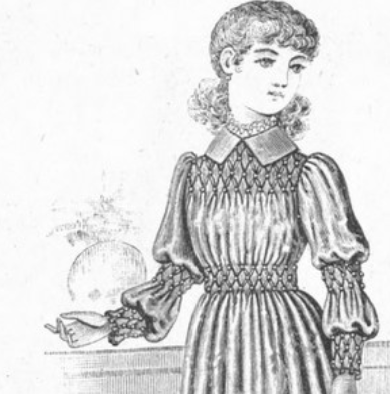
The Timeless Charm of Smocked Children's Clothing
Share
Smocked clothing, with its gathered fabric and intricate embroidery, has been a staple in children's fashion for centuries. This charming style has a rich history that intertwines with the evolution of clothing itself.
The art of smocking is a form of embroidery that involves gathering fabric so it can stretch. Originating in England during the 15th century, smocking was initially a practical technique for laborers' garments, allowing for ease of movement. However, it wasn't long before the aesthetic potential of smocking was realized. By the Elizabethan era, smocking became a decorative element, adding elegance to cuffs, collars, and bodices.
As time progressed, smocking transitioned from a functional necessity to a fashion statement. The 18th and 19th centuries saw smocked garments become popular in women's and children's wardrobes, particularly in dresses and blouses. The Victorian era celebrated 'smock frocks,' a type of men's outer garment adorned with elaborate smocking patterns.
The Industrial Revolution brought about sewing machines, which changed the smocking landscape. Machine smocking, or "mock smocking," became widespread due to its ease and speed. Yet, hand-smocking remained valued for its craftsmanship and detail.
In contemporary fashion, smocking continues to be a significant trend. Designers incorporate smocking into various garments, from summer dresses to stylish tops, maintaining its timeless appeal. The transition of smocking into baby clothes is believed to have occurred in the late 18th and early 19th centuries, reflecting adult fashion trends more closely. Smocked dresses and rompers became favored for babies due to their comfort, flexibility, and aesthetic appeal.
In the South, smocking holds a special place in the hearts of many. It's a symbol of tradition and respect for history. Southerners' affinity for smocking can be traced back to the British colonists who settled in the region, bringing with them their smocking traditions. The Southern climate also plays a role, as smocking is typically done on thin fabrics like cotton, which is practical in the heat.
Smocking's journey from a practical solution for laborers to a beloved fashion detail for children's clothing is a testament to its versatility and enduring charm. Whether handcrafted or machine-made, smocked clothing continues to capture hearts with its classic look and nostalgic feel. It's a style that has stood the test of time, evolving with fashion trends while maintaining its unique identity.
As we look at the smocked garments of today, we see more than just clothing; we see a story woven through time, a craft passed down through generations, and a tradition that continues to be cherished. Smocked children's clothing is not just about style; it's about preserving a piece of history and sharing it with the next generation.
The art of smocking is a form of embroidery that involves gathering fabric so it can stretch. Originating in England during the 15th century, smocking was initially a practical technique for laborers' garments, allowing for ease of movement. However, it wasn't long before the aesthetic potential of smocking was realized. By the Elizabethan era, smocking became a decorative element, adding elegance to cuffs, collars, and bodices.
As time progressed, smocking transitioned from a functional necessity to a fashion statement. The 18th and 19th centuries saw smocked garments become popular in women's and children's wardrobes, particularly in dresses and blouses. The Victorian era celebrated 'smock frocks,' a type of men's outer garment adorned with elaborate smocking patterns.
The Industrial Revolution brought about sewing machines, which changed the smocking landscape. Machine smocking, or "mock smocking," became widespread due to its ease and speed. Yet, hand-smocking remained valued for its craftsmanship and detail.
In contemporary fashion, smocking continues to be a significant trend. Designers incorporate smocking into various garments, from summer dresses to stylish tops, maintaining its timeless appeal. The transition of smocking into baby clothes is believed to have occurred in the late 18th and early 19th centuries, reflecting adult fashion trends more closely. Smocked dresses and rompers became favored for babies due to their comfort, flexibility, and aesthetic appeal.
In the South, smocking holds a special place in the hearts of many. It's a symbol of tradition and respect for history. Southerners' affinity for smocking can be traced back to the British colonists who settled in the region, bringing with them their smocking traditions. The Southern climate also plays a role, as smocking is typically done on thin fabrics like cotton, which is practical in the heat.
Smocking's journey from a practical solution for laborers to a beloved fashion detail for children's clothing is a testament to its versatility and enduring charm. Whether handcrafted or machine-made, smocked clothing continues to capture hearts with its classic look and nostalgic feel. It's a style that has stood the test of time, evolving with fashion trends while maintaining its unique identity.
As we look at the smocked garments of today, we see more than just clothing; we see a story woven through time, a craft passed down through generations, and a tradition that continues to be cherished. Smocked children's clothing is not just about style; it's about preserving a piece of history and sharing it with the next generation.
